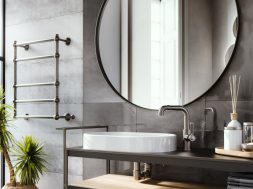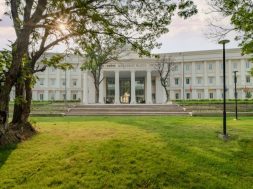Importance of Landscape in High-Rise Structures

Ar. Premnath explains how a theme can unify your landscape and guide your plant and material choices.
Whether you are interested in completely redesigning your landscape or simply making a few changes, there are some essential factors to consider before you start planting. While many people head straight to their local gardening supply store to browse the selections, creating a plan beforehand will help you choose plants that best fit your needs and thrive in your landscape. Microclimates are usually broken into one of four categories: full sun, partial shade, shade, or deep shade; for that, take note of your landscape’s microclimate when selecting plants.
A theme can unify your landscape and help guide your plant and material selections. Create openings to encourage exploration in your building and keep people moving throughout the landscape. Plants can be used as barriers to define areas within your landscape and identify where your landscape ends. You can use plants to create physical barriers in your landscape by blocking views and access to an area if you want to keep your ideas open but maintain some barriers. Low-growing plants can be used to create implied barriers, blocking access but not the view.
Using unique plants, distinct structures, or garden ornaments allows you to highlight a particular area of your landscape. Contrasting shapes, textures, sizes, and colours will help to capture attention and direct it to a specific area. Plants, hardscapes, and garden ornaments all have their own visual details, from various forms and shapes to an array of colours and textures. By thinking about how these visual details can be used to complement and contrast each other, you can create a cohesive and captivating landscape. By choosing resource-efficient plants, consciously managing water, and choosing environmentally sound hardscapes, you can help protect and preserve your environment.
Using environmentally friendly hardscapes, non-toxic preservatives, stains, paints, and cleaners is another way you can protect your natural resources. Also, consider reusing construction materials; before demolition starts, consider what materials you might be able to reuse, repurpose, or incorporate into your new landscape design. Green areas are places where people can go for recreation and physical exercise or find peace. This benefits their health and reduces the stress levels of the average city dweller.
Creative play areas in nature are essential for children to enhance their social skills and concentration, provide more opportunities for employment and help boost productivity. Building integrated greenery systems allow the provision of greenery beyond the conventional garden and courtyard to the building itself (such as roof and facade) and even becomes part of a building component (such as a sky terrace). These technologies are relevant in high-density urban settings where land is scarce.
The application of green roofs and green facades/walls is also shifting from the in-situ application – assembling the green roof layer by layer directly on the roof to modular based. The application provides the following:
• Shorter installation time.
• Minimum risk of damaging building materials.
• Flexibility in design by mixing and matching various types of plants to create interesting design patterns.
• Ease of maintenance and replacement.
Cookie Consent
We use cookies to personalize your experience. By continuing to visit this website you agree to our Terms & Conditions, Privacy Policy and Cookie Policy.









